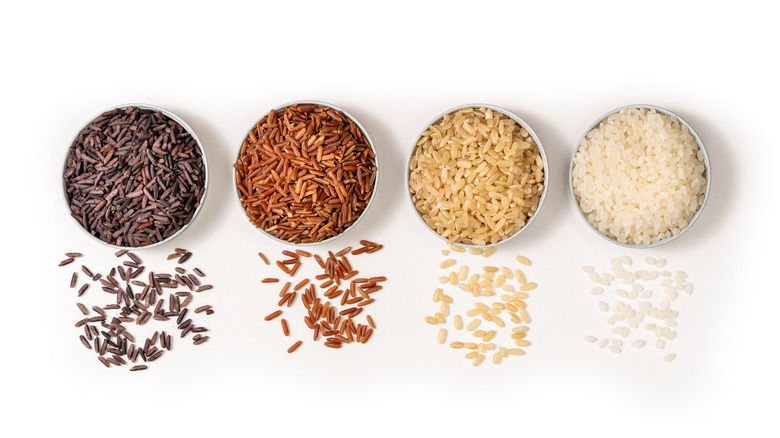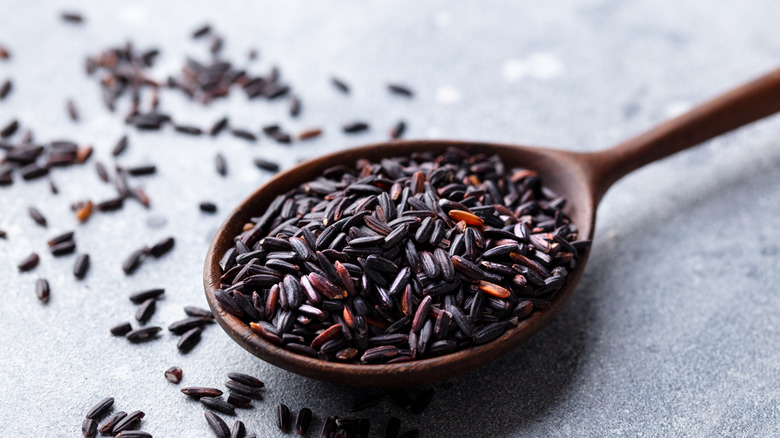This Type Of Rice Contains The Highest Amount Of Protein Per Cup
When you're picking a source of protein for your plate, rice may not be the first thing that comes to mind. It's usually banished to the oh-so-contentious carbohydrate section. While it may not pack as big of a punch as other options for the macronutrient (via MyFoodData), those following a plant-based diet or looking to minimize their meat intake (or those who just like rice) may not want to overlook the tiny grain as a source of protein. It might be time for its glow up from a side dish to the main event.
According to Think Rice, there are over 120,000 varieties of rice cultivated across the planet. Yes, you read that correctly. You're probably only familiar with a handful of the most popular alternatives that line the shelves and frequent menus. Luck would have it, the strain that is the protein powerhouse of that very big global bunch happens to be one of the cool kids.
A superior pseudo-grain reigns supreme
Wild rice offers the most protein per serving over other varieties. Somewhat of a double misnomer as it's technically not rice nor wild, rice is a seed of semi-aquatic grass that is mostly farmed these days. According to a L.A. Times article from 1985, which featured a report from the U.S. Department of Agriculture's Farmline magazine, the U.S. produced 435,000 pounds of wild rice in 1965 and 5.55 million pounds in 1984. And by 2003, as revealed by the Agricultural Utilization Research Institute (AURI), annual wild rice production had grown to between 8 and 23 million.
Per the USDA, a 1-cup cooked serving of the nutty granule contains 6.54 grams of protein — that's over 2 grams more than the equivalent serving of both brown and white rice. Unlike other rice, wild rice contains all nine essential amino acids (meaning your body cannot make them and must get them from food) making it a complete protein (via Healthline).
Next time you're constructing your dinner and trying to hit all of your macros, don't discount wild rice. Not only does it offer up a unique, earthy chew to each bite, it holds its weight as a suitable source of protein over the other rice varieties.

